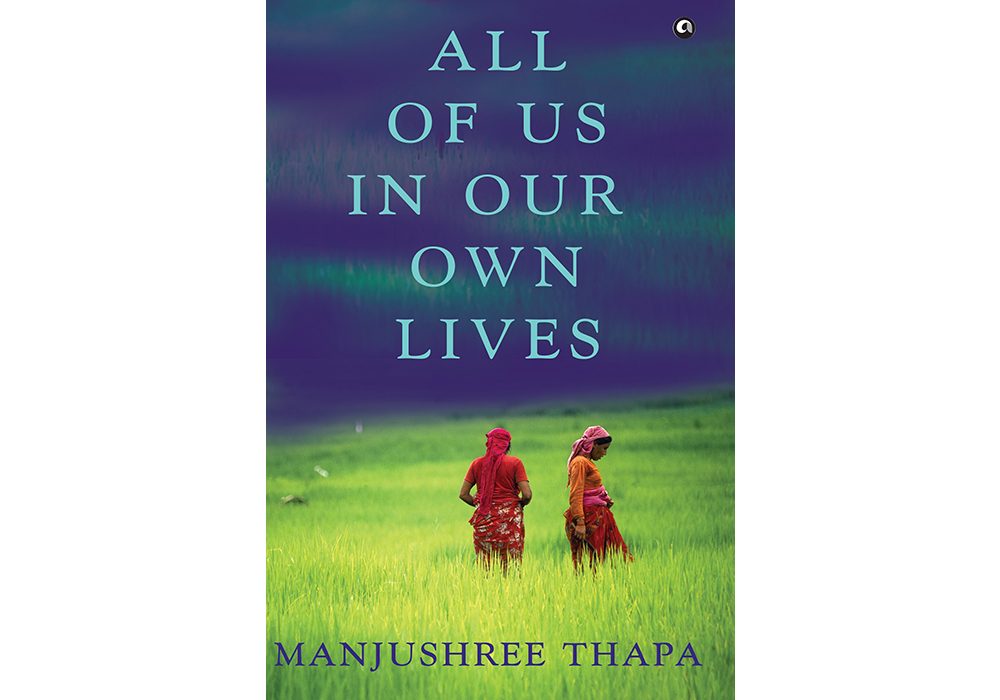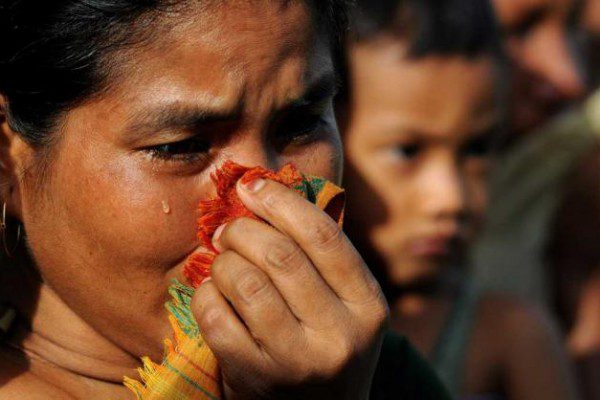Manjushree Thapa’s latest book is a heartwarming tale of disjointed souls, all looking for a way forward in the country of their birth, says Rohini Mitra.
All Of Us In Our Own Lives
Manjushree Thapa
Aleph
Rs 499 | 213 pp
Manjushree Thapa’s All of Us in Our Own Lives, through a complex, interconnected web of narratives builds a portrait of Nepal from several different perspectives—Ava, the city-hardened, cynical Canadian lawyer, on a quest to find meaning in her life by connecting with her roots; Indira, the well-to-do, upper-middle-class working woman, struggling to adapt to the two faces of Nepali womanhood she must uphold; Gyanu, home in Nepal after years, desolate and caught between the two worlds of his beloved, familiar hometown and the glitzy, money-hungry world of Dubai where the love of his love, Maleah awaits; and young Sapana Karki, with her eyes full of dreams and a heart full of hope for a better future for her and her childhood comrades. Each of these strangers in Thapa’s book, come from different backgrounds, with wildly different outlooks on life; each of them carry a different brand of world-weariness and each of them is looking for a place to go.
For Ava, despite her Nepali roots, Kathmandu and its surrounding villages envision a way of life she has never encountered. For Indira, every day is a constant struggle to reconcile the work she does for the empowerment of Nepali women with the restrictions and regulations placed upon her own life, as a Nepali daughter-in-law. For Gyanu, what had once been home is now a burden and the hills of Nepal are the end of a horizon that has, for him, gone far beyond. For Sapana, life is an endless turmoil of loss, grief and more loss—all the dreams she once dreamt are slowly riddled to dust and she must discover that new dreams must be wrought if life is to go on.
Nepal is a country among so many in South Asia that is easily overlooked. That it is a nation with a cultural, political and economic history as diverse, intricate and tumultuous as our very own India is an idea that we, as a predominantly Western-influenced readership, often overlook.
Ava and Indira both inhabit a world where these dreams are made, done and dusted at the end of each working day. “Women are the ones who create lasting change, the kind of change that transforms society”—this is something their environment drills into them, in every way, but what happens when Ava is brought face to face with the impoverished, pathetic lives of the villagers she must empower, a life that could well have been hers had she not been one of the lucky ones, chosen to leave Nepal for a better life in Canada? What happens when Indira is forced to confront the helplessness of her own domestic life, and how little she can do to save the life of Durga, her young servant who has fallen into grave trouble? Gyanu and Sapana, once beloved siblings, now find little connect or understanding and while he yearns to return to the new life he has wrought in Dubai, she hopes only for her family and loved ones to stay around her, as one by one, they each abandon her. “She’s seen, in Nepal, how fragile life can be. It’s all we have—a chance to be fully alive.” This is the chance they each try to fight for. Whether any of them will achieve it, matters little in the long run, for as Sapana wonders, wistfully to herself, at the very end, “Maybe this was all there would ever be, her asking questions to the universe and receiving no answers at all”.
At the heart of it, All of Us in Our Own Lives is essentially exactly that—a group of people, for whom, life has seemed to run its course and who must now find new purpose. In a reality that has ceased to make sense, they find new dreams in each other and in the unexpected manner that four complete strangers are brought together to change each other’s lives in ways none of them could have envisioned. Cool, crisp and thematically rather similar to Rohinton Mistry’s A Fine Balance, All of Us in Our Own Lives makes for a mellow read, with the kind of quiet intensity that catches up with you as you follow the characters through their day-to-day problems and leaves you with the strangest sense of nostalgia when you turn that last page.


